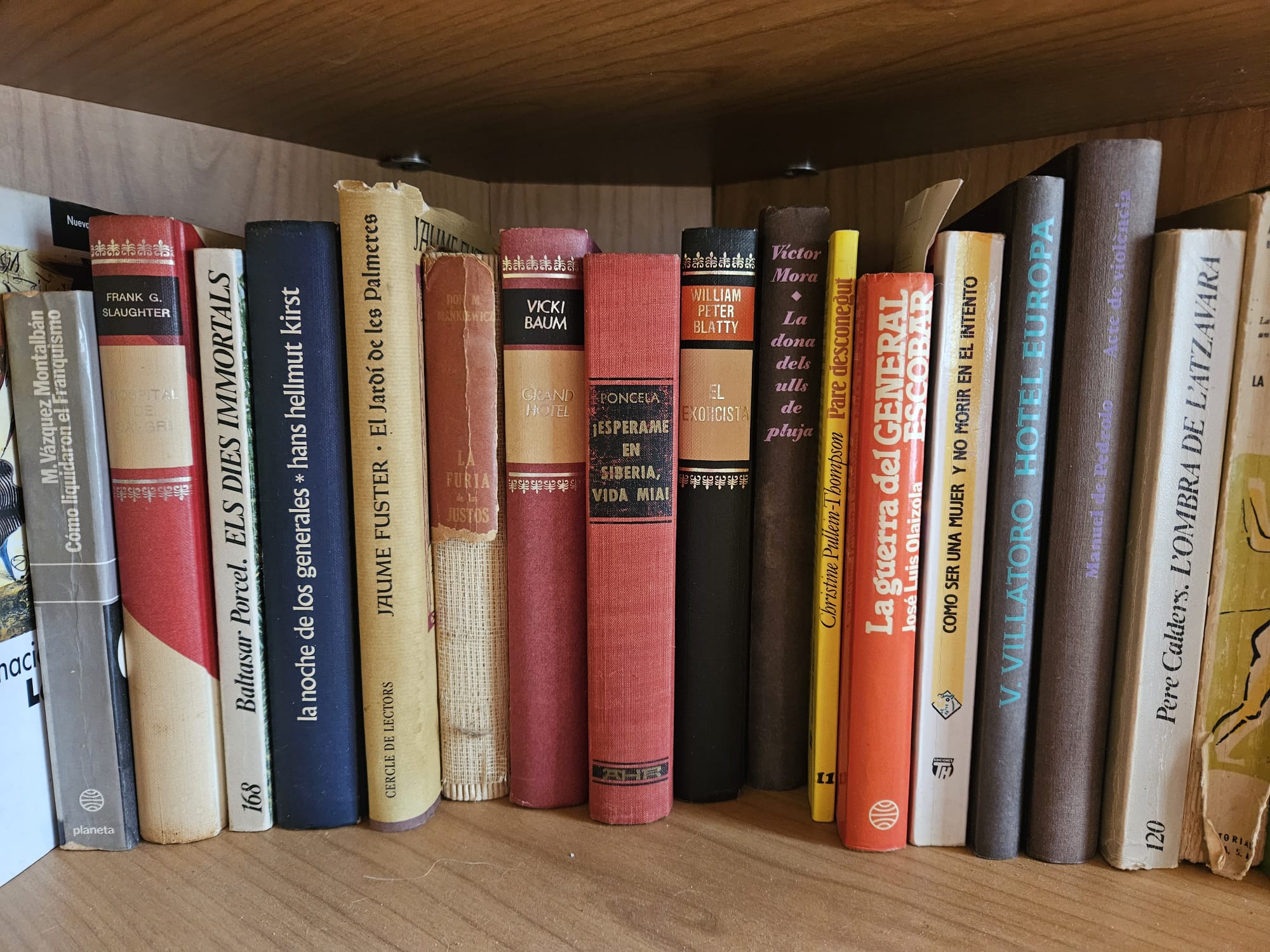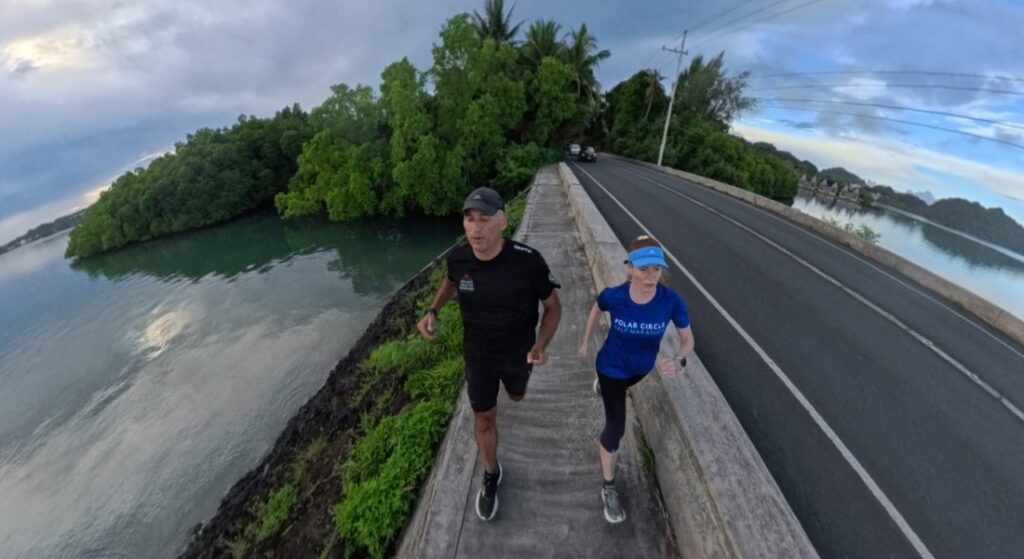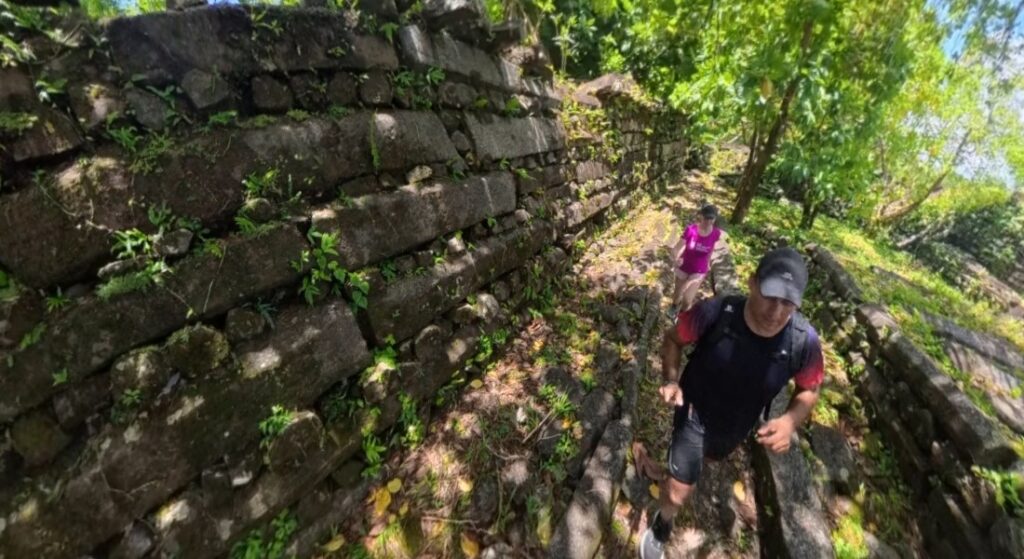Cartagena, Colombia. 7th May 2024.
We struggled in the Caribbean heat but we were rewarded at the end, when we could run on top of the walls of a old colonial city and reached the centre of “The Jewel of the Caribbean”: Cartagena de Indias.
A city that is equally known as “la ciuda heroica” (“the heroic city”) or “la fantástica” (“the fantastic”) because of its magical and enchanting atmosphere: with its colorful streets, lively music, and rich cultural heritage.
Also, I am a huge fan of Gabriel Garcia Marquez’s work, and Cartagena is one place which is associated with the Nobel Prize winner, as he lived and worked there in the late 1940s. In “Love in the Time of Cholera” he described life a town in the Caribbean coast in a way he could only do – with colours, irony and magic!
TLDR; “too long, didn’t read”
- I just want to run! Take me to RUN.
- I have 1 minute. Take me to USEFUL INFORMATION.
- Running is my excuse for travelling. Take me to TRIP.
- I want to know what to read in the plane. Take me to ONE BOOK.
🌍 The trip 📷
The heart of Cartagena is its well-preserved colonial old town, surrounded by massive stone walls built to protect the city from pirates and invaders during the colonial era.

We walked around the old city centre, which is enclosed by the stone walls, and we tremendously enjoyed its colorful colonial buildings, narrow cobblestone streets and picturesque squares.
There were no too many tourists, and we could walk and enjoy the atmosphere. Street vendors were showcasing colourful fruits and shouting. Shouting lot, actually. One thing we learned while in Cartagena is how loud people can be here – more in the “run section”.

We started off following the same route that we did when running, but this time stopping and enjoying the little details.
Around San Pedro Claver Sanctuary
I loved San Pedro Claver Sanctuary, a church which is a beautiful example of colonial architecture built in the 17th century:

It honors the legacy of Saint Peter Claver, a Spanish Jesuit priest known as the “Slave of the Slaves”: San Pedro Claver was a prominent figure in the history of Cartagena and the fight against slavery. He dedicated his life to ministering to enslaved Africans brought to the city during the colonial era.

We also walked by Cartagena’s Cathedral, situated in the old town’s main square, Plaza de Bolívar: a prime example of Spanish colonial architecture. Its interior is adorned with beautiful altars and religious art.

We later went to the city walls of Cartagena, which are an iconic feature of the city’s skyline and a testament to its rich history of conquests and defenses.
The construction of the city walls began in the 16th century, shortly after Cartagena de Indias was founded by Spanish “conquistadores” in 1533. The walls were built to protect the city from attacks by pirates, privateers, and rival European powers who sought to control the valuable port and its riches – specially the French.

Cartagena’s strategic location on the Caribbean coast made it a prime target for plunder and conquest. The city walls were designed to fortify its defenses and provide a barrier against potential invaders. They also served as a symbol of Spanish colonial power and control in the region.
Bocagrande: Hotel Caribe and the Typewriter

While researching about Cartagena, I found an article from BBC World News in which Hernando Alvarez, whom Gabriel García Marquez calls “cachaco” (that is, from Bogota) explains that later in life, Gabriel Garcia Marquez and his wife Mercedes Barcha had an apartment in front of the Sea, in a building called “the typewriter”.
And we bathed every day in the beach in front of that building!


The historical Caribe Hotel
For lodging, I had decided to stay in the Caribe Hotel, which is the oldest hotel in Cartagena de Indias.

We enjoyed it – it is worth it, not because of the many swimming pools that it has (many luxury hotels have them), but because of the old charm.
Its web defines the hotel as “an architectural jewel, an icon for Cartagena and Colombia’s hotel business”, and this is not embellished. Everything exudes the classy elegance of old times.

For instance, the elevator was an old one with the wooden doors and the bell boy having to manually operate it!
The hotel has 35,000m of open spaces where a vast variety of birds and animals live.

We saw fawns and peacoks, and apparently (so I read it in this article), they used to have many more!! Warning: they can be quite loud at night!

🏃♀️ The run 🏃♂️
We went running from the Caribe hotel in BocaGrande to the historic center. This is a route of between 3 to 4 kilometers, one way, along the Avenue “Carrera 1”, next to the coast.
Sounds good, right? Well: it was actually one of the worst runs we’ve done lately. For several reasons:
The main one was the hot and humid climate.
We were prepared for the heat: we left at 6:30am in the morning, smeared with sunscreen and each one carrying a bottle of water. But even at that early hour, the heat made us sweat profusely and we had a really hard time.
From Bocagrande to the old city
We ran on dilapidated sidewalks, although luckily they were wide. In some areas there were loose tiles and you could trip over. On one side you have the beach and on the other, a busy road. Furthermore, no air flows at all.
“Carrera 1” joins the wider and even busier Santander Avenue in the Marina Park. That early in the morning, we saw homeless people who were sleeping in the parks. In the Navy Park at the entrance to the old city, in front of the statue of Admiral José Padilla (no, not my grandfather, although he had the same name), there were at least five snoring peacefully.

Cartagena is a lively and chaotic city. Unfortunately, this means that we also saw all kinds of garbage: even a pair of women’s shoes with high heels, lying in the middle of the sidewalk!
There were some runners, most of them foreigners, sweating a lot, without shirts and having a really bad time. Like us, really.

Old city
The best thing was getting to the old city: it is really beautiful!
Here, with hardly any people, we were able to enjoy the beautiful painted colonial buildings, the churches and parks.

Although there were already some street vendors who were getting up early and preparing to sell their merchandise… and fighting! After running in front of the Sanctuary of San Pedro Claver and the Plaza del Parque de Armas, we arrived at the large Plaza de la Aduana.
We were going to take a video running in front of the portals of the Mayor’s Office of Cartagena de Indias.
But we had to wait until three vendors finished shouting and fighting. It took them a while…
In the end they settled the argument with one leaving shouting insults 😝

Afterwards we passed through a lush park in front of the Cathedral. Around us, people were waking up and… what a surprise! The park was named after Simon Bolívar!
From there we went towards the coast and climbed the walls. We could contemplate the Caribbean Sea and the views of the city!

With difficulty due to the heat, we returned, retracing our path: there are about 3 kilometers back, between the center and “La Lagunita”, where our hotel was located.
Alternative Run – Castillo Grande
The following days, we found another running route which is actually better… and even “sponsored” by Adidas, which had decorated the running path with motivational slogans 😆

The route consists in running around the Castillo Grande peninsula, and it is nice since you get to run in wide streets along the beaches.
Or, if you dare, you can actually run on the beach!

With the touristic buildings in the background, palm trees and lush vegetation, we saw many runners opting for this route. However, again: be aware of the heat! There are no drinking fountains along the way.

Useful information
🏃♀️ 8-10k circular route from Bocagrande to the old city of Cartagena de Indias.
🌎 Cartagena de Indias, Colombia – South America.
👟 Urban: bring shoes for asphalt.
✅ You get to see beautiful Cartagena de Indias, run on top of its walls and have a bath in the Caribbean Sea!
❌ The climate is humid and hot: you can only run very early in the morning or at dusk.

Map


One book
For this one, a book I read many years ago and which impressed me with its description of profund love and reality, in a pragmatic yet magical way that only Gabriel García Márquez can convey.
It is set in a town in El Caribe, and it draws you in with its prose and the way a different time is described: different yet so universal: the book is about love and the many faces it can present. It is, simply, beautiful.
There is no greater glory than to die for love.
Love in times of cholera, Gabriel García Márquez.
“Love in times of cholera”, Gabriel García Márquez.

Plot Summary: Florentino Ariza and Fermina Daza are young, optimistic and cheerful. Their nature brings them closer as they fall in love. However, they are separated by several miles and to counter this distance, they use love letters and telegraph to convey their emotions. Their resistance bears fruit as they are united only to find out that they are strangers to each other and hence cannot live together.




